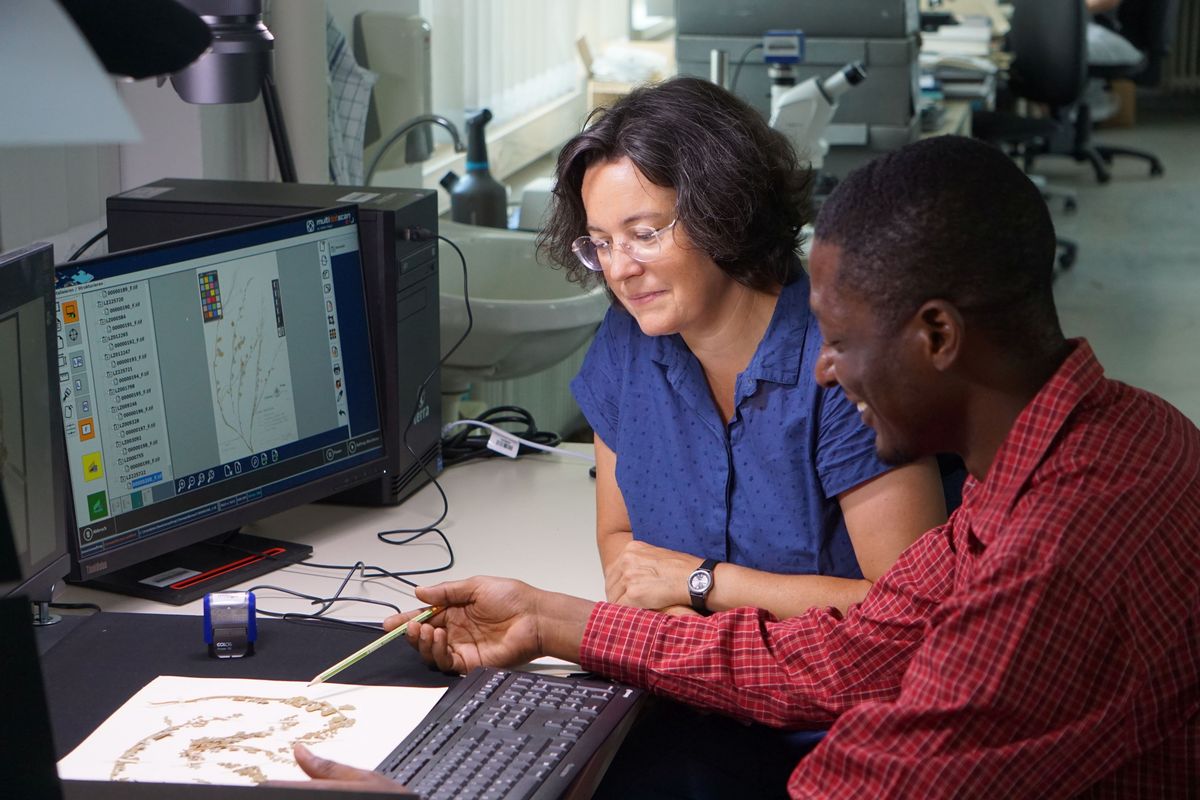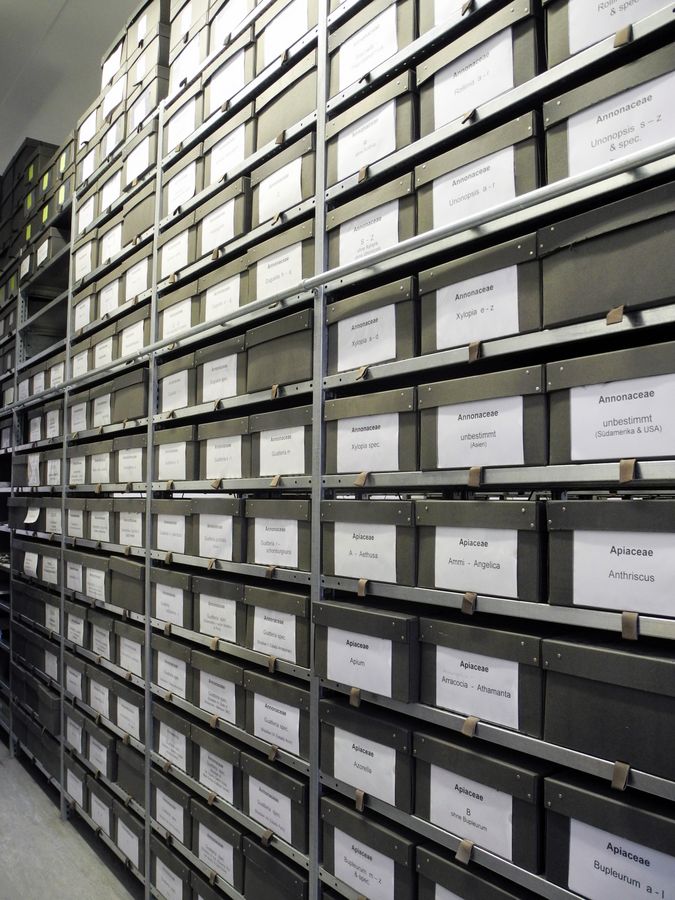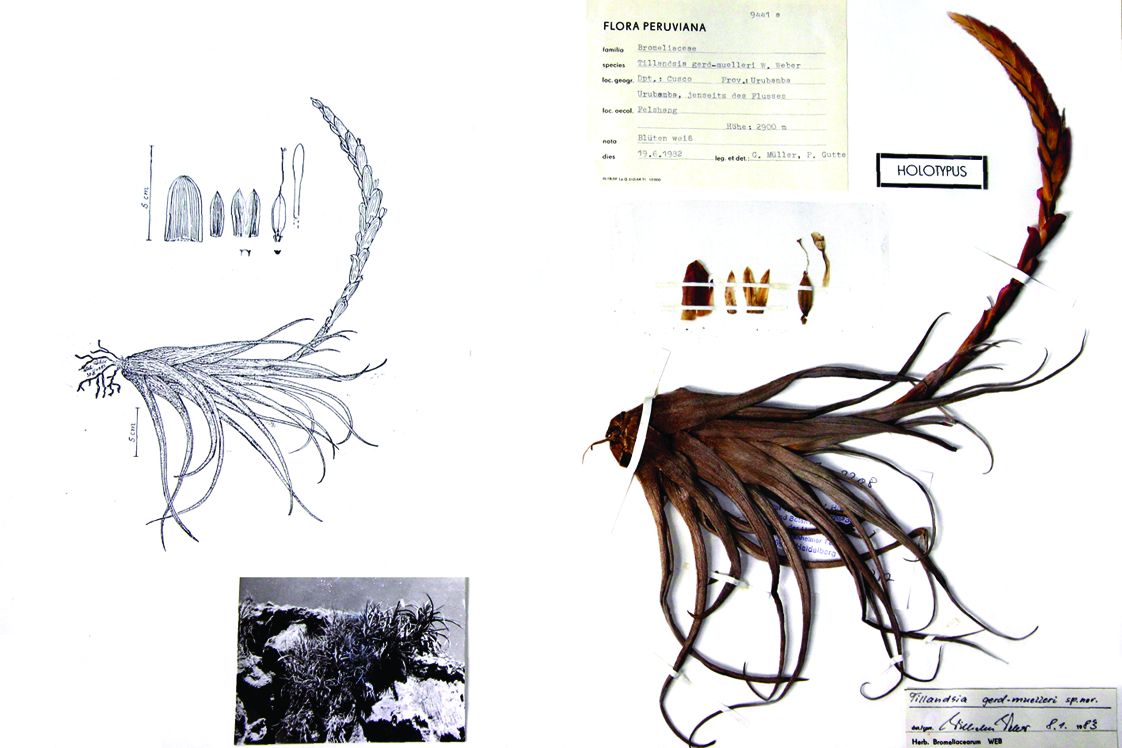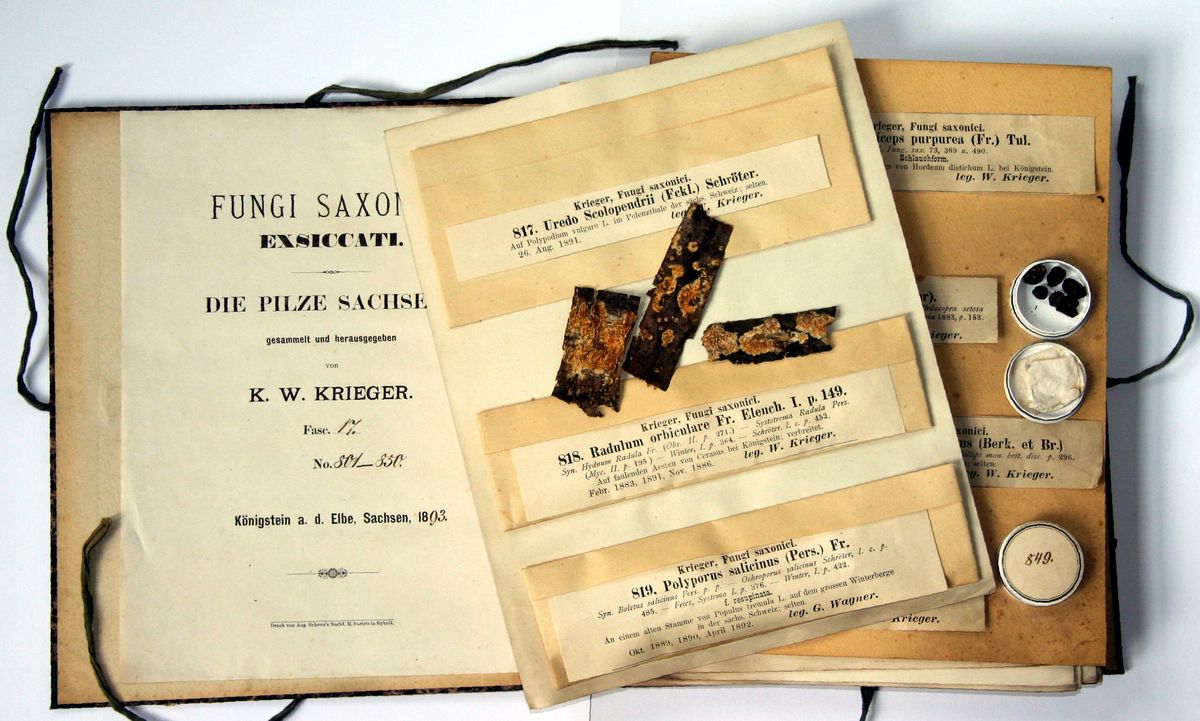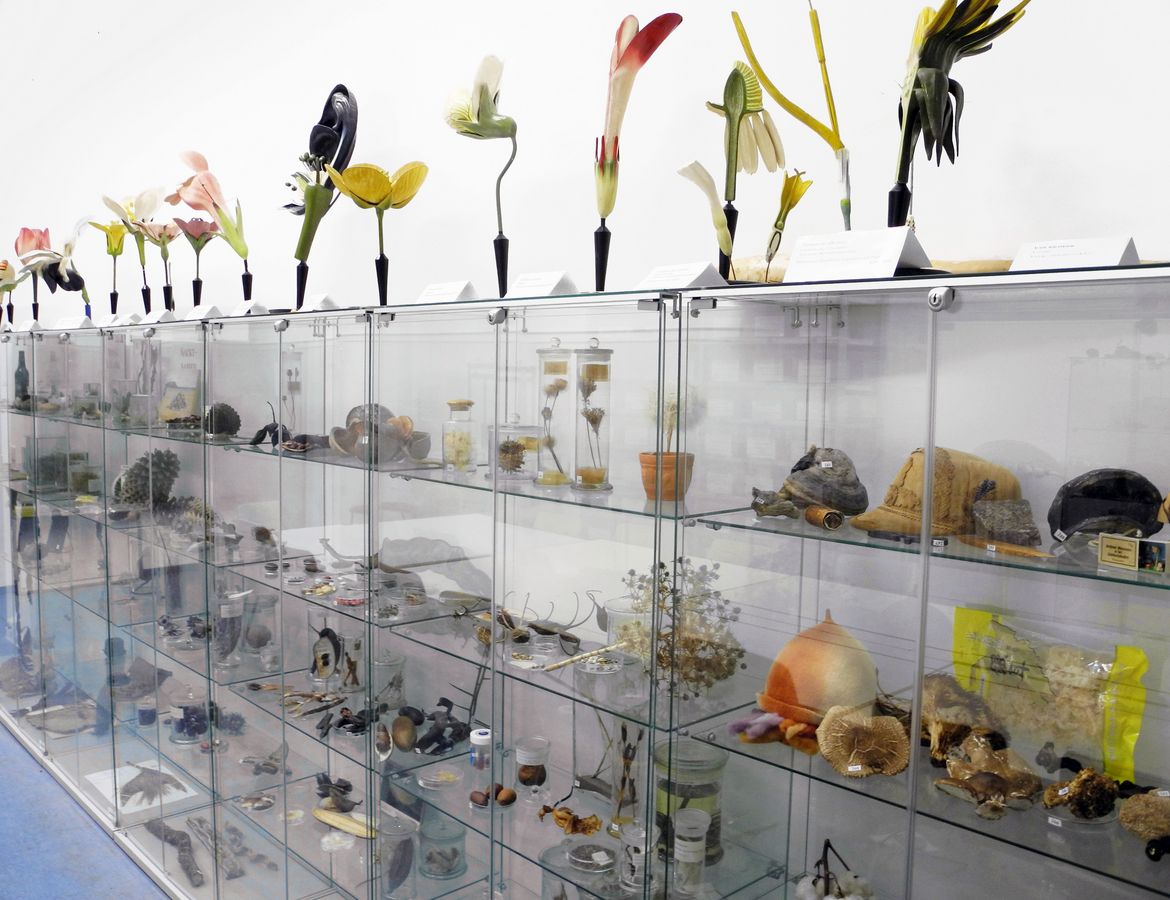The herbarium is a scientific unit of Leipzig University. Our working group is in charge of management, administration and further development of the collection.
The Leipzig herbarium primarily encompasses a research collection. Since certain sub-collections were specially designed for student education and are actively used, it is also of particular value for teaching.
Herbaria are comparable to libraries, in which almost inexhaustible information about the native or even exotic plant world is archived. It is possible to analyse plants of different origins comparatively. Therefore, herbaria are indispensable reference collections for systematic research. Thanks to progress in research in the preparative and analytical fields, even the most modern examination methods, such as electron microscopy, pigment or DNA analysis, can be applied to herbariumised plants.
The importance of botanical collections is by no means limited to systematics. Related scientific disciplines such as ecology, zoology, pharmacy, genetics, biochemistry, environmental protection and nature conservation, also require herbarium collections for their research work. This involves the decline or spread of plants, the search for medicinally effective natural substances or the study of interactions between animals and plants (e.g. pollination, fruit spread or feeding).
As one of the more than 2,600 public botanical collections worldwide, in which over 300 million plant specimens are preserved, the Leipzig herbarium is particularly rich in tradition. It was founded as early as 1806 by Chr. F. Schwägrichen (1775 - 1853) and is the oldest university herbarium in Germany.
Little is known about its early history. On the initiative of G. Kunze (1793-1851), the collection was considerably enlarged from about 1830 onwards. Other important Leipzig botanists, e.g. E. F. Poeppig (1798 - 1868), G. H. Mettenius (1823 - 1866) or J. A. Schenk (1815 - 1891), also enriched the herbarium with valuable collections. Since ferns were the main focus of research and collecting for a long time, Leipzig's herbarium was mainly famous for specimens from this group of plants. The expansion of the collections continued, when Leipzig gained world renown for plant physiology in the first half of the last century. During the bombing raid on Leipzig in December 1943, the Botanical Institute and the herbarium were destroyed. From 1947, under the direction of G. Weichsel (1905 - 1977), work began on rebuilding the herbarium. The activities were purposefully continued over decades under the directorship of G. K. Müller and the custodial care of P. Gutte.
The collection has been continuously expanded up to the present day. During the GDR era, the herbarium could only be housed provisionally in an attict. However, since 1995 it has been housed in generously equipped rooms.
Currently, the collections comprise about 150.000 specimens, systematically arranged (about 130.000 cormophytes, 13.000 fungi, other groups 7.000). Collections of material fixed in solvents, wood samples, fruits and seeds, are also preserved. Valuable contributions to our contemporary seed plant collections were made by O. Fiedler (1880-1971), P. Gutte (born 1939), W. Morawetz (1951-2007), and G.K. Müller (born 1929).
The most important part of the herbarium is the South American stock, mainly herbs from the northern Andes or trees from the Amazonian region (together about 50.000 specimens). Also particularly noteworthy is the regional collection documenting the flora of Leipzig and Saxony (approx. 50,000 specimens).
Most of the specimen material was and is collected by Leipzig scientists on research trips, excursions or in their free time. The herbarium's plant holdings therefore reflect to a large extent past and present research foci. Numerous other specimens from all over the world have been added to the herbarium through the exchange of duplicates and donations (some from estates).
Particularly active collectors are/were:
Farms and seed plants: O. Fiedler (1880-1971), P. Gutte (b. 1939), W. Morawetz (1951-2007), G.K. Müller (b. 1929)
Fungi: R. Conrad (1938-2006), P. Otto (b. 1961).
The collections are grouped according to their systematic affiliation to large family groups and housed in sub-collections. Large fruits, woods and fossils, for example, are kept separately, as well as wet preparations being kept in a special collection. The type of preparation and conservation used depends on the one hand on the respective systematic group, and on the other hand on the intended investigations. For example, material for cytological and karyological research is preserved in mixtures of alcohol, formalin and vinegar. With careful conservation and considerate storage, the plant and fungal specimens can be preserved for many hundreds of years with the most important characteristics for their identification still showing.
Several hundred specimens of great importance for systematics are displayed in showcases and serve teaching and display purposes. A collection of about 250 plant species, known as the study herbarium, provides students with an overview of the native flora. The herbarium also includes a pool of botanical archives. It includes scientific photos and drawings, card files and publications on the history of botany and its collections.
Due to the destruction of the herbarium during the Second World War, no historical Leipzig specimens of significance for taxonomic research exist. This concerns, among others, collections by B. Auerswald (1818-1870), G. Kunze (1793-1851), G. H. Mettenius (1823-1866), E. F. Poeppig (1798-1868) and H. G. Winter (1848-1887). However, there are four specimens of E. F. Poeppig (one of which is an isotype: Leucheria paniculata Poeppig ex Lessing) preserved by donation from Munich (Herbarium M).
type-material
seed-bearing plants
| species | type |
|---|---|
Acacia dietrichiana | Isotypus |
Chloris halophila var. humilis | Holotypus |
Choricarpia leptopetala (F. Muell.) | Paratypus |
Cyperus haspan var. dietrichae | Syntypus |
Elaeodendron australe var. pedunculosa | Isosyntypus |
Helictotrichon pubescens | Isoneotypus |
Jacaranda crassifolia | Paratypus |
Jacaranda montana | Iso- und Paratypus |
Jacaranda pulcherrima | Isotypus |
Jacaranda subalpina | Iso- und Paratypus |
Klarobelia megalocarpa | Isotypus |
Klarobelia pumila | Isotypus |
Lepanthes herzogii | Holotypus |
Leucheria paniculata | Isotypus |
Mosannona pacifica | Isotypus |
Nasa triphylla ssp. colonchensis | Holotypus |
Oenothera lipsiensis | Holo- und Paratypus |
Oenothera nissensis var. fiedleri | Holotypus |
Oenothera punctulata | Isotypus |
Oenothera rubricaulis var. longistylis | Isotypus |
Oenothera turoviensis | Isotypus |
Oenothera velutinifolia | Isotypus |
Oenothera x rigirubata | Isotypus |
Oenothera x saxonica | Holotypus |
Phalaris peruviana | Iso- und Paratypus |
Piptochaetium juninense | Holotypus |
Pitcairnia gutteana | Holotypus |
Pseudoxandra spiritus-sancti | Isotypus |
Puya gerdae | Holotypus |
Puya gerd-muelleri | Holotypus |
Puya gutteana | Holotypus |
Puya macbridei ssp. yungayensis | Holotypus |
Racinaea marioportillae | Paratypus |
Sabazia microspermoides | Isotypus |
Sarcopera flammifera | Paratypus |
Sigesbeckia abyssinicum | Isotypus |
Sigesbeckia australiensis | Holo- und Isotypus |
Sigesbeckia bogotensis | Holotypus |
Sigesbeckia repens | Isotypus |
Siphonandra boliviana | Isotypus |
Tillandsia gerd-muelleri | Holotypus |
Tillandsia gutteana | Holotypus |
Tillandsia zaratensis | Holotypus |
Fungi
| species | type |
|---|---|
Ganoderma lipsiense | Epitypus |
Psilocybe natalensis | Holotypus |
exsiccata
These are part of the herbarium through donation or permanent loan.
- C. Kopsch: Bryotheca Saxonica (1919 – 1936)
- K. W. Krieger: Fungi Saxonici Exsiccati (1902 – 1919)
The herbarium's specimen material is available to scientists and research institutions all over the world. Under the international abbreviation LZ for "Herbarium Universitatis Lipsiensis", loans and exchanges are carried out with numerous institutions. In this context, literature on botanical systematics is also made available and information of taxonomic relevance is provided.
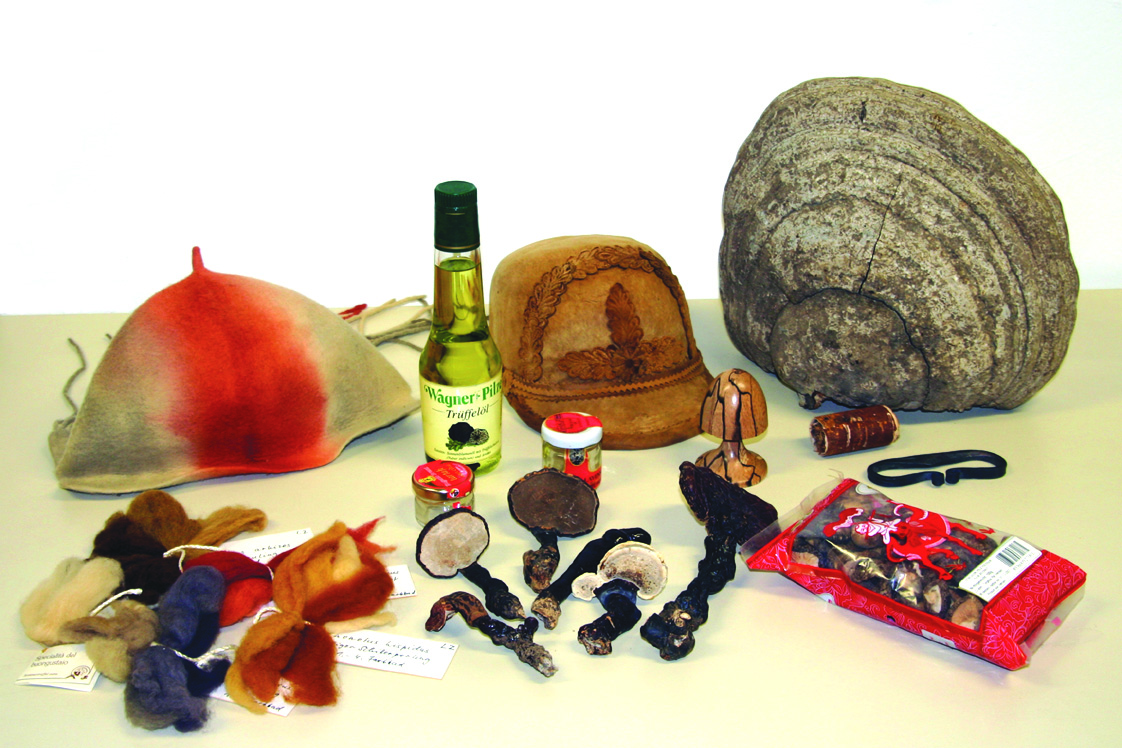
Due to limited space and staffing, public relations is only a minor part of our work. As a public collection, the herbarium, including the extensive reference library, is available to both scientists and botanically interested citizens for viewing or use.
In addition, as a service to the public, e.g. species determinations are made, cultivation recommendations for plants are given or measures against phytoparasitic fungi are recommended.
Guided tours are offered every first Wednesday of the month (from 04:00 p.m.) and are also possible on other dates. School classes and kindergarten groups are also very welcome. In addition to the main collection, the educational and display collection is presented during guided tours.
In any case, please book in advance. The guided tours are free of charge.
The herbarium is located on the upper floor of Johannisallee 21-23 with disabled access available. The building is about 100 metres from Ostplatz and easily accessible by public transport. We recommend using tram lines 12 and 15 (to Ostplatz) or bus line 60 (to Ostplatz).
